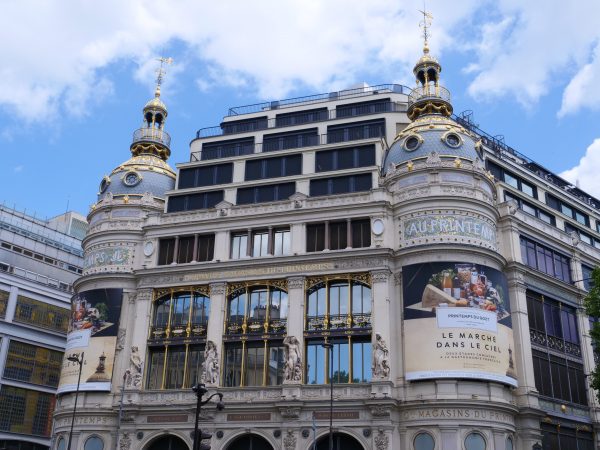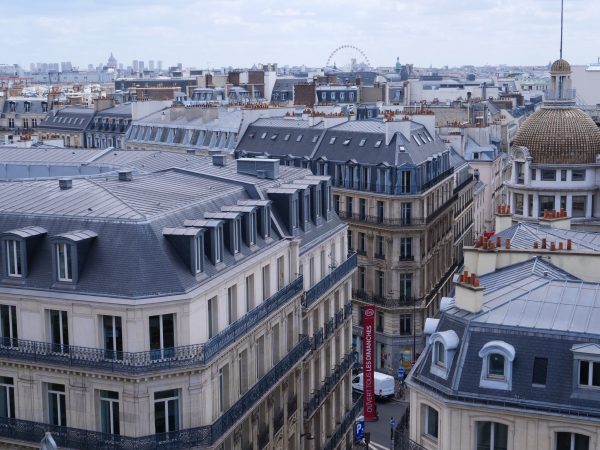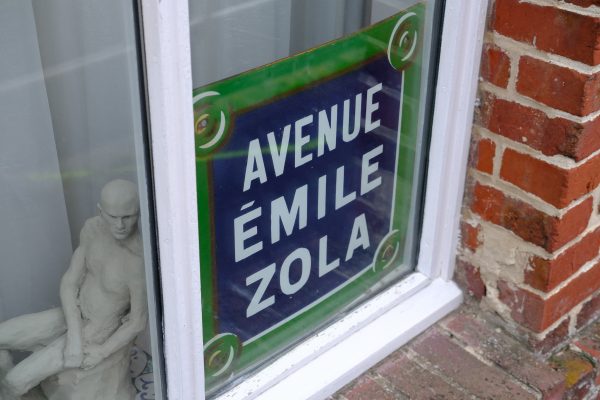The novels of Emile Zola belong to this category of works that everyone has at home but that, unfortunately, nobody reads.
Zola was fascinated by Paris. Emile Zola and Paris is above all, the story of crazy love. This was also reflected in his writings. Emile Zola is, without a doubt, one of the authors who has talked the most about Paris in his books. He details the atmosphere but also its slow evolution.
It all began in 1840, on the fourth floor of number 10 rue Saint-Joseph. It was in this building in the second arrondissement of Paris that Emile Zola was born. The story between Zola and Paris had just begun. Nevertheless, he spent his childhood in Aix-en-Provence. But following a stroke of fate, after the death of his father, Zola had to abandon his studies and find a job. So he started working as a clerk in a publishing house.
Emile Zola and Paris, a love story

This 19th-century French author was very productive on a literary level. Most of his novels are set in Paris. Works that give us enough details to discover the Paris of yesteryear. Among his writings, three words describe his time and Paris particularly well. These are L’Assommoir, la Curée and Au bonheur des Dames. A criticism in three acts of a Parisian society that is gradually being dehumanized. The forced march transformation of Paris thwarted him to the point of producing numerous novels.
Three books and three reviews of Paris
Emile Zola lives in a time when Paris is transforming itself at a glance to become a modern city. Paris is becoming an increasingly populated city, a transformation encouraged by the industrial revolution. From now on it is in the cities that the workers will be found. And then there is the transformation of Parisian architecture. Paris resembled Rome and became a straight city; for some, it would have lost its soul.
1. La Curée, a book published in October 1871
“Paris sliced with a sword, veins open, feeding one hundred thousand diggers and bricklayers…”.
With a title like this one quickly understands that Emile Zola does not carry in his heart the transformations of Paris in the second half of the 19th century. In this novel, we discover a life of debauchery during the Second Empire. A kind of capitalist lust, since the interests of the elite invariably oscillate between the pleasures of flesh and gold. The interest in money and the lure of quick gain are illustrated by the character Aristide Rougon. A man who bought land and made his mark during the rapid transformations and the politics of the great works carried out by Baron Haussmann. La Curée is, therefore, a social and societal criticism. An opportunity to discover the geographical transformations of Paris against a backdrop of occult links, illegal taking of interests, or insider trading. With the suppression of many Parisian neighborhoods, a whole social counterpart is disappearing. The first to be affected are of course the working-class neighborhoods, but it is also the spoliation of property bought at low prices and then sold at a high price to the Paris City Hall. Many Parisians will lose either their homes or a lot of money.

But the Cure is also the surgical description of the works of Hercules launched by Baron Haussmann. Huge boulevards were dug in Paris. Trenches were dug, trenches were made, and neighborhoods were bled to death. And during these operations, it is sometimes entire districts that disappear from the surface of Paris.
One of the strongest points of the novel is undoubtedly the one in which Saccard, contemplating Paris from Montmartre Hill, declares: “These big cities are stupid! He hardly suspects the army of pickaxes that will attack him one of these beautiful mornings, and some hotels in the Rue d’Anjou would not glow so brightly under the setting sun if they knew that they have only three or four years to live”.
L’Assommoir, a novel published in 1877
With this novel, Emile Zola deals with the social consequences of the changes in Paris on people’s lives. As Paris is becoming a great modern capital that will dazzle the world at the 1898 Universal Exhibition, Emile Zola chooses to talk about the Assommoir. A district in the north of Paris that was neglected by Baron Haussmann’s policy of great works, a district where the excluded and the working poor were crowded in. Those Parisians who no longer have a place in this new Paris come to pile up in the Chapelle district.
With L’Assommoir, Emile Zola describes a plunge into the black misery of the forgotten districts of Paris. Social criticism and an admission of failure will provoke an outcry when it is released. One does not necessarily judge the content but rather the form. Indeed for the society of the time, words and style were considered too crude. Emile Zola had anticipated the critics by writing in his preface that it was “the first novel about the people, which does not lie and which has the smell of the people”.
Emile Zola will describe in a naturalist style the difficulties of a world that does not find its place and that has been thrown into a neglected, dilapidated neighborhood where alcoholism is a kind of self-destruction whose inevitable outcome is shame followed by premature death.
Au Bonheur des Dames, published in 1882
“It is from the hell of the poor that the paradise of the rich is made” L’homme qui rit, Victor Hugo, 1869.
In this new novel, after attacking Haussmann and the great works in the Cure, after depicting an unhappy society towards the Chapelle district, Emile Zola attacks the new rich. Au Bonheur des Dames is above all an inventory of the new religion of Paris. A buying fever that seems to illustrate a terrible maxim that the paradise of the rich should be made out of the hell of the poor. A terrible statement was made a few years earlier by Victor Hugo.
With this novel, we discover the universe of department stores “the cathedrals of modern commerce” which over-theatre the sale and which values their customers. The result is irrevocable; the Parisian shops will pay a high price for their closure. On the program is the Samaritaine on the right bank, the Bon Marché on the left bank, and the Printemps on the Grands Boulevards just behind the Opera. We discover the commercial strategies and the destruction of competition. But beyond sales, what these department stores offer is above all to offer the feeling of belonging to the new social elite. A promise that could be translated into a sentence.
“You want to show that you have money? We will give you the opportunity.
Au Bonheur des Dames is also the sad conclusion of the end of old Paris. Emile Zola is in love with a Paris that will never return. The city he loved so much is being destroyed before his eyes. Paris concentrates all the stations, all the attention, and all the investments. A hyper-centralization that serves the capital and the enrichment of the wealthiest.
The forced march towards urbanization is causing the destruction of entire neighborhoods and the disappearance of small shops. Despite his sharp criticism of the commercial strategies and transformations of Paris, Zola does not fail to recognize the positive aspect of the reconstruction. The capital under Haussmann’s leadership became cleaner and more liveable. The creation of sewage drains, the creation of parks, large halls, and wide avenues made Paris liveable. Zola will say that all this was perhaps only a necessary evil.
Zola the epilogue of a lifetime

Emile Zola, novelist, journalist, and defender of liberties and the poor, died in Paris on 29 September 1902 at 21 bis rue de Bruxelles in the ninth arrondissement of Paris. Having just returned from Medan, where he had spent the summer months with his wife, he built a fire to warm their room. During the night Alexandrine and Emile Zola were intoxicated by this fire in the fireplace. In the morning, doctors are called in catastrophe, but they can only ascertain the death of the famous writer at 10 a.m. Accidental death due to intoxication. His wife will survive this terrible fate.
Born in Paris, and died in Paris, this man was a popular writer, and his books have been translated and published all over the world. They were later adapted for cinema and television. Although Zola made history as the main leader of the naturalist movement, it is as a political and humanist journalist that he will remain in posterity. The publication in 1898 of his famous “I accuse” in the daily newspaper l’Aurore made him a hero. Even if it cost him a libel suit and an eleven-month exile in London, each era has its truths that are not necessarily easy to deny. On 4 June 1908, six years after his death, Emile Zola entered the Pantheon, thus joining the Great Men of the Nation.
photo credits: Yann Vernerie